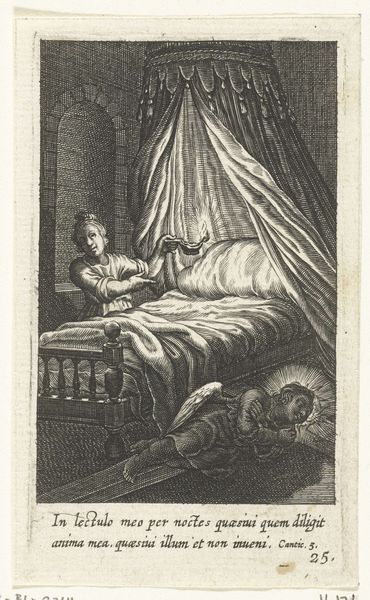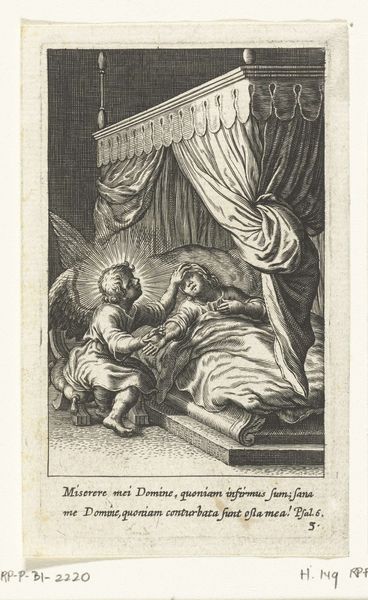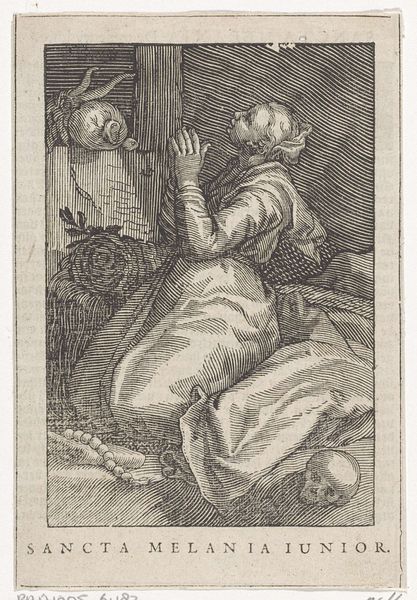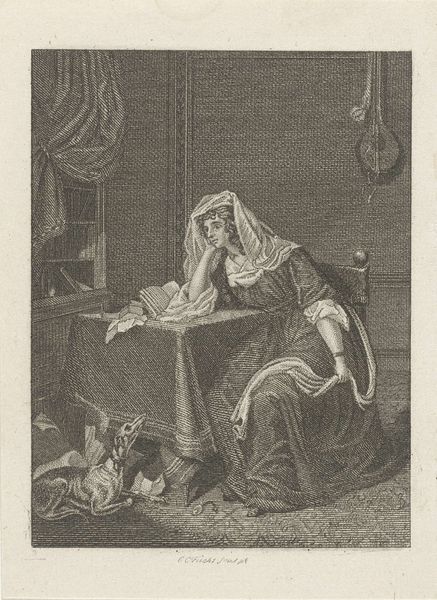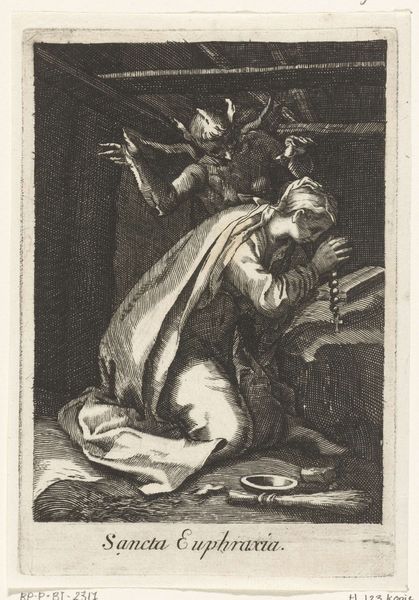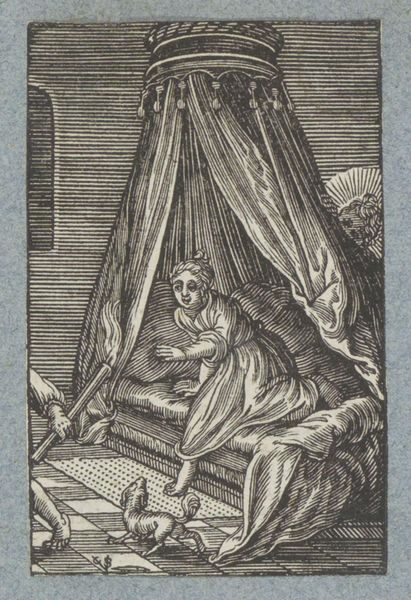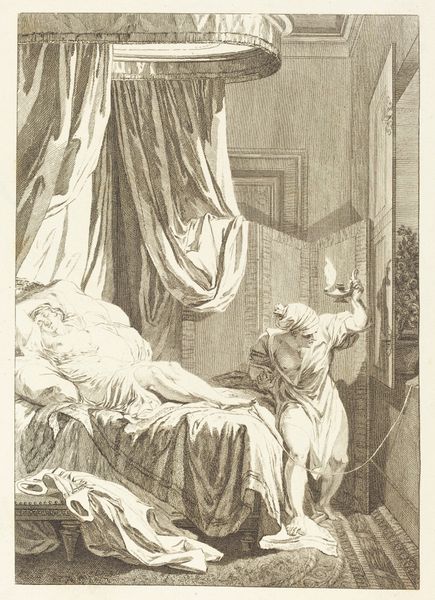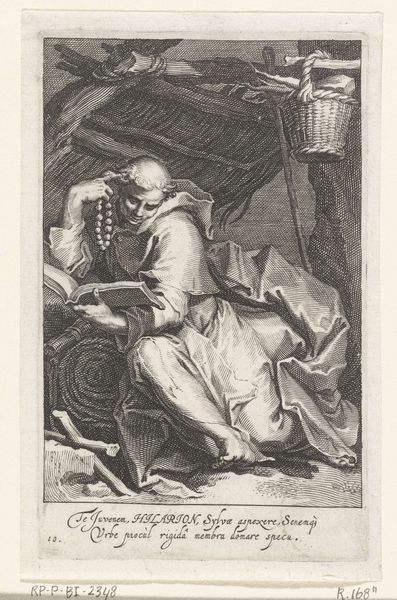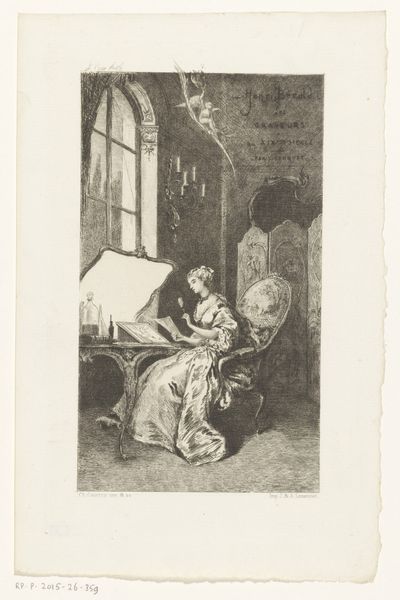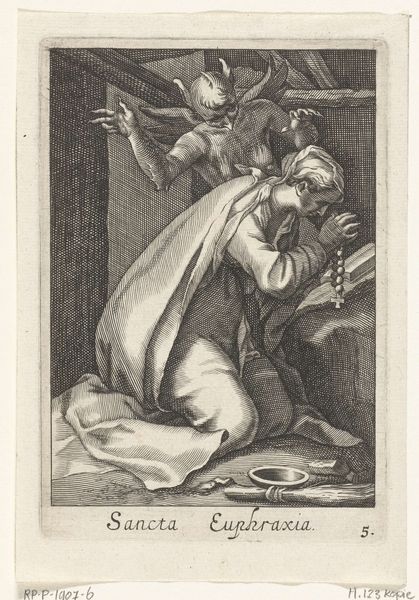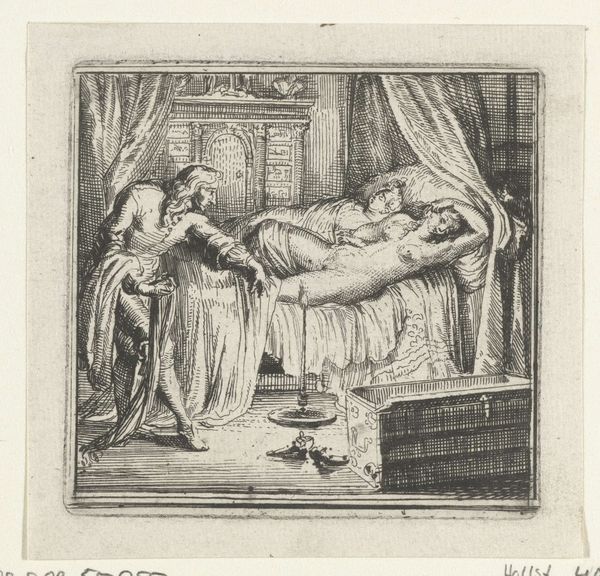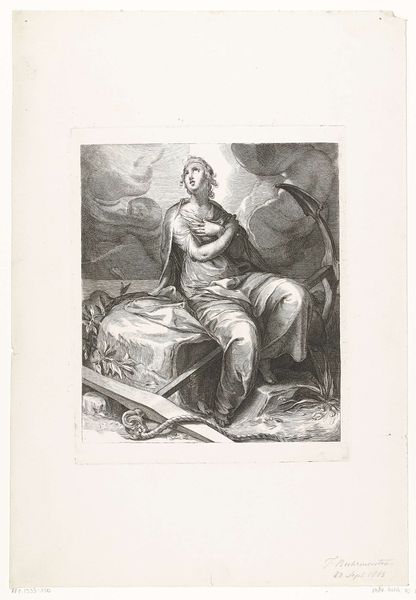
print, engraving
# print
#
pen illustration
#
pen sketch
#
old engraving style
#
figuration
#
line
#
genre-painting
#
northern-renaissance
#
engraving
Dimensions: height 95 mm, width 56 mm
Copyright: Rijks Museum: Open Domain
Curator: Boëtius Adamsz. Bolswert, a figure of the Northern Renaissance, created this engraving between 1590 and 1624. It's titled "Kind stapt uit bed," which translates to "Child steps out of bed." Editor: It has a nervous energy. The composition is a flurry of diagonal lines drawing the eye to the central figure—the child—but that flickering torch on the left disrupts any sense of calm. Curator: The torch suggests urgency, yes, and it's meant to. In iconographic terms, light often represents knowledge or revelation. Bolswert’s "child" is likely an allegorical figure drawn from the Song of Songs; the Latin inscription refers to searching through the city for a beloved. This reflects a soul’s journey seeking spiritual enlightenment. Editor: That makes sense given the crown-like structure looming behind the bed canopy. Structurally, though, that canopy dominates the composition. The sheer volume of fabric, meticulously rendered with fine lines, encloses the figure, trapping her within this visual space. It really boxes her in, figuratively. Curator: It speaks to the protected, privileged status implied by the bed itself. Beds in art often signify important life events - birth, marriage, or death - or even a sacred space. The action and Latin text at the bottom frame reinforce an act of divine intent. The crown, the fabric of the bed, and even the little dog signal devotion. Editor: Ah, I’d initially taken the dog as merely a touch of domestic realism! I love the dynamism captured in the lines that make up its form. And speaking of lines, notice how Bolswert uses hatching and cross-hatching to create gradations of light and shadow. That’s how he shapes the forms, especially on that luscious bed fabric. Curator: The lines do create drama, lending the scene an emotional charge – a blend of expectation and anxiety, mirroring that quest for the divine. Editor: I can appreciate the intent more fully now. It goes beyond being just a masterfully rendered early modern print; there’s an emotional current that carries through. Curator: Precisely, seeing it within the symbolic language helps ground an important interpretation.
Comments
No comments
Be the first to comment and join the conversation on the ultimate creative platform.
